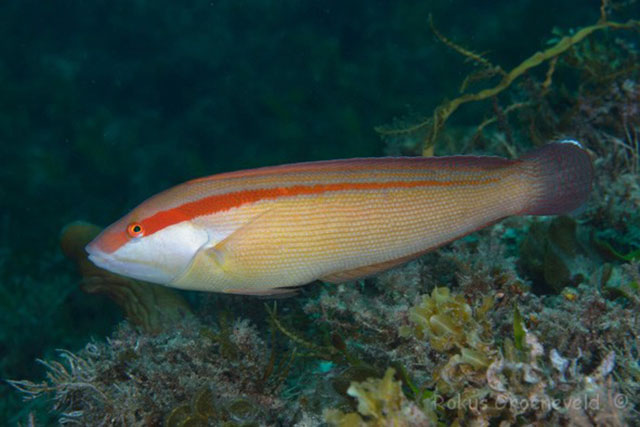| Labridae (Wrasses), subfamily: Corinae |
| 40 cm TL (male/unsexed) |
|
reef-associated; marine; depth range 1 - 45 m |
| Eastern Indian Ocean: Australia. |
|
Dorsal spines (total): 9-9; Dorsal soft rays (total): 12-12; Anal spines: 3-3; Anal soft rays: 12-12. Corner of mouth without canine; second teeth in jaws about 1/2 length of anterior canines in adults, about 3/4 in subadults. |
| Inhabits shallow rocky and coral reefs with sand patches. Juveniles and females act as cleaners (Ref. 9710). |
|
Least Concern (LC); Date assessed: 12 April 2008 Ref. (130435)
|
| harmless |
|
Occurs from Coral Bay to Recherche Archipelago (Ref. 9710). Recorded from Shark Bay (Ref. 115274). Common over shallow rocky reefs and sandy areas near reefs of about 40 m depth. Reported to be the most commonly observed fish at Rottnest I. Museum: Western Australia, BMNH 1935.9.14.16. King George Sound, MNHN A.9286 (holotype of Julis auricularis). Geographe Bay, AMS I.19629-036. Cockburn Sound, AMS I.20231-010, BPBM 27781. Esperance jetty, AMS I.20226-002. Rottnest I., AMS I.20239-008, LACM W55-189-9. Between Cape Naturaliste and Geraldton, AMS E.2484 (Ref. 33411). Also Ref. 33411. |
Source and more info: www.fishbase.org. For personal, classroom, and other internal use only. Not for publication.

